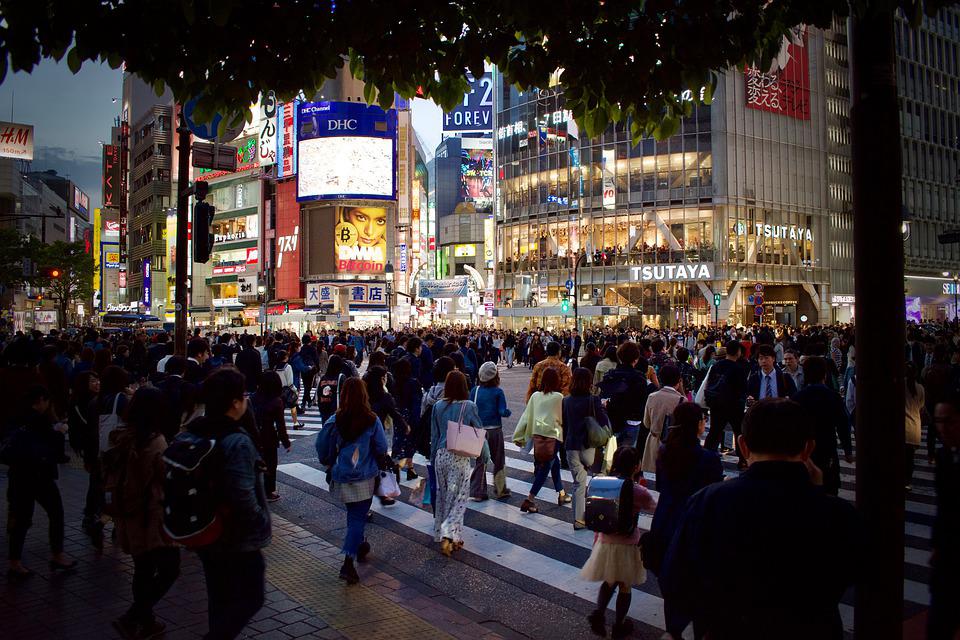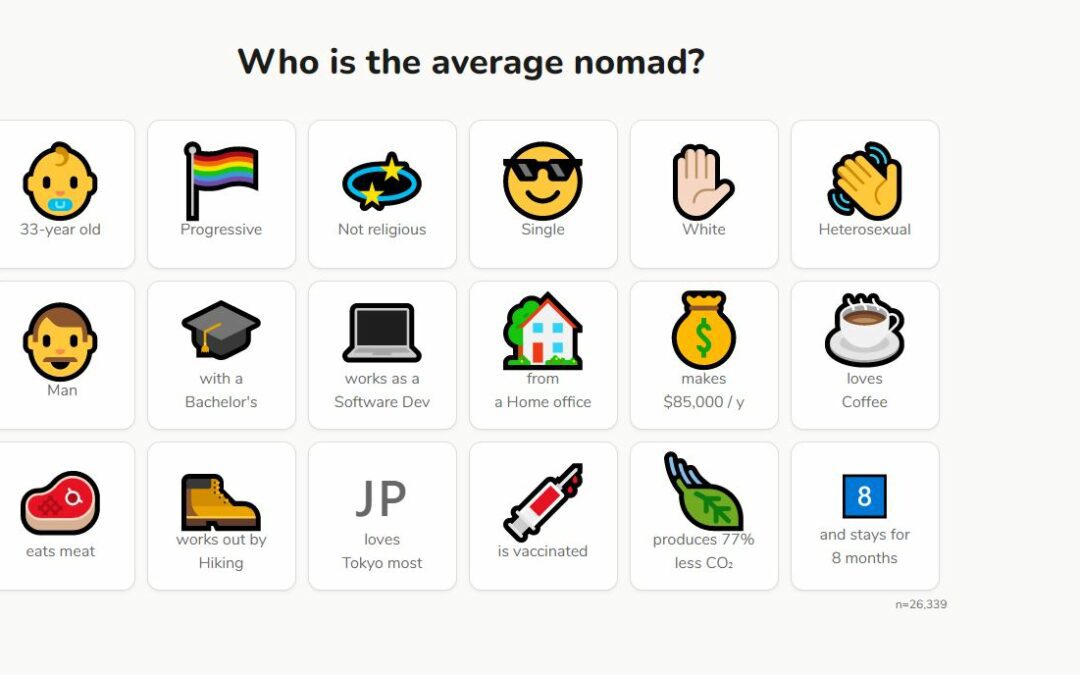|
|
Is your work fully remote or hybrid? Are you a digital nomad?
These are very normal questions to ask and be asked in 2022, when a few years ago, only a handful of people in your circle would know what “remote work” or “digital nomadism” are.
It’s estimated that the number of digital nomads around the world at this moment is around 50 million people give or take. This is more than the population of Spain, or Argentina and around 5 times the population of Greece.
Digital nomadism is now not only a mode of work, but also a lifestyle that is accepted and even regulated in many countries all over the world. You can now apply for a digital nomad visa in more than 25 countries around the world, and that number is growing daily. There are also travel health insurance providers that are dedicated to digital nomads, like SafetyWing, offering coverage in any corner of the globe.
But who are the digital nomads? How old are they? What jobs do they do? Are they mostly men or women? And where are they travelling to?
The answers to all of those questions were provided by Nomad List in their report, The 2022 State of Digital Nomads.

The report
The report is on a Nomad List page, updated with Live data on daily basis. The data includes tens of thousands of Nomad List members who are active digital nomads as indicated by their travel logs.
This is the advantage of getting data from Nomad List compared to other online nomad communities, like Facebook for example, where many nomad groups don’t have a prerequisite that members be active digital nomads, and not people who want to be digital nomads, but currently aren’t.
However, on the downside, using members of Nomad List as a sample, means there is a selection bias. Nomad List is a subscription service, so those who don’t want to pay, or are unable to, are not included in the sample.
Now that we have a background about the report, let’s dive into the findings!

Meet your average digital nomad
The average digital nomad is a single, white, heterosexual male. He is about 33 years old, not religious with progressive political ideas. He has at least a bachelor’s degree, works as a software developer, mostly from a home office, and earns an average of $85,000 annually.
On average, the average nomad stays in a country for about 8 months. His favorite city is Tokyo, Japan. He usually is a coffee lover, who follows a diet that includes meat, and wouldn’t miss an opportunity for hiking.
Bear in mind that the data paints the picture of the average digital nomad. Not everyone of course fits this image.
Digging a little deeper
Who are the sampled nomads?
The average age for digital nomads on Nomad List is between 29 and 37. Very small percentages are 25 or younger, or 39 or older. 60% of digital nomads are men and only 1% identifies as other (not men or women).
Only 5% of digital nomads are gay or lesbian. Heterosexuals comprise 87% of sampled digital nomads. When it comes to ethnicity, only 13% of nomads are Asian, and 12% are Latin. The majority are white, comprising 61% of the sampled nomads.
The lifestyle is mostly attractive to singles who represent 65% of the sample, while 35% are in a relationship. The majority of digital nomads report being close to their families (79%).
Their education, views and preferences
When it comes to religious views, a bit over half the sample (56%) identifies as non-religious, while 29% identify as spiritual, but not necessarily following a specific religion.
Only 3% of digital nomads have PhDs, but 90% have a form of higher education.
When asked what do they look for, an almost equal percentage of nomads said they are looking for friends and travel buddies. While only 13% were looking for a relationship.
What do they do? and how?
A whopping 48% of digital nomads are full-time employees! While only 16% are equally freelancers or startup founders. Only 22% of nomads sampled make less than $50,000 a year. The majority earns between $50,000 and $250,000 annually. Almost half of the sample do not own a house, while the other half does.
When it comes to where nomads want to work, turns out the majority 61% prefer to work from a home office, while only 16% prefer a co-working space and an even smaller percentage (9%) work from cafes.
The majority of male digital nomads are software developers or web developers. Women are mostly creatives or marketing professionals. Other common jobs are startup founder and UI/UX designer.
Where do they go? and how do they spend their time?
The top destinations for digital nomads in general are Tokyo, Zagreb, Ko Pha Ngan, Medellin, Saint Petersburg and Madrid. The most liked destination by female nomads is Lisbon.
The least liked destinations by digital nomads were North Macedonia and Moldova. The most visited city is London and the most visited country is the USA. Nomads also reported that they stay an average of 2 months per city and 8 months per country.
Hiking is predominantly the top favored activity by digital nomads of both genders. In 2nd place for men was fitness and for women yoga. Other activities like running, swimming and cycling are equally popular among both genders.

Why is this data helpful?
This data is helpful for aspiring nomads to understand what to expect from other nomads. It should in no way discourage anyone who doesn’t fit in these boxes. After all, we are describing the average nomad here.
The data is especially helpful to businesses and countries that want to attract digital nomads. Understanding your target audience, makes it much easier to market to them something that would fit their preferences.
It’s also helpful to draw conclusions from the data and improve on them. For example, it is clear that the digital nomadism lifestyle is still not as inclusive as we would like it to be. So maybe we need to ensure easier and safer travel for women, promote destinations that are LGBTQ friendly or push against minimum requirements of digital nomad visas, in order to be more inclusive of different income levels, genders and ethnicities.
What conclusions do you draw from the report?
Let’s discuss.











